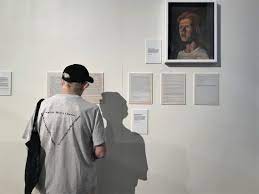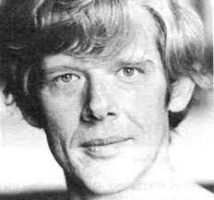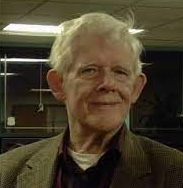by Charles Lear, author of “The Flying Saucer Investigators.”
 A pioneer saucerologist/UFOlogist, Ted Bloecher, who mostly went uncelebrated except among his peers and a small number of enthusiasts, passed away on January 22 of this year at the age of 94. He was not known because of book sales, lectures, appearances on television or in documentaries, but for his research with and contributions to various organizations beginning in 1954 with Civilian Saucer Intelligence New York of which he was a founding member. He was mostly interested in cases involving humanoids, and his association with the National Investigations Committee on Aerial Phenomena seems to have helped Director Donald Keyhoe, who had an aversion to humanoid cases due to his hardened stance against contactee reports, become more open-minded. Besides this, he was a Broadway performer, and his credits include ensemble work in Oliver! and Hello, Dolly! He quit active research in the mid-1980s and donated his UFO files to the Center for UFO Studies and archives to the New York Public Library.
A pioneer saucerologist/UFOlogist, Ted Bloecher, who mostly went uncelebrated except among his peers and a small number of enthusiasts, passed away on January 22 of this year at the age of 94. He was not known because of book sales, lectures, appearances on television or in documentaries, but for his research with and contributions to various organizations beginning in 1954 with Civilian Saucer Intelligence New York of which he was a founding member. He was mostly interested in cases involving humanoids, and his association with the National Investigations Committee on Aerial Phenomena seems to have helped Director Donald Keyhoe, who had an aversion to humanoid cases due to his hardened stance against contactee reports, become more open-minded. Besides this, he was a Broadway performer, and his credits include ensemble work in Oliver! and Hello, Dolly! He quit active research in the mid-1980s and donated his UFO files to the Center for UFO Studies and archives to the New York Public Library.
 Ted Bloecher, Isabel Davis, and Alexander Mebane formed Civilian Saucer Intelligence in 1954 and put out a regular newsletter under the group name. They became Civilian Saucer Intelligence New York in 1955 but retained CSI as their acronym. Jim Moseley served as President from 1954 to 1955 but spent much of his term exploring (and grave robbing) in South America. They held themselves to high standards and investigated with a scientific approach inspired by the short-lived Los Angeles based group, Civilian Saucer Investigation. CSI were the go-to group for Project Blue Book Scientific Consultant J. Allen Hynek, who sought information from them without the knowledge of the Air Force.
Ted Bloecher, Isabel Davis, and Alexander Mebane formed Civilian Saucer Intelligence in 1954 and put out a regular newsletter under the group name. They became Civilian Saucer Intelligence New York in 1955 but retained CSI as their acronym. Jim Moseley served as President from 1954 to 1955 but spent much of his term exploring (and grave robbing) in South America. They held themselves to high standards and investigated with a scientific approach inspired by the short-lived Los Angeles based group, Civilian Saucer Investigation. CSI were the go-to group for Project Blue Book Scientific Consultant J. Allen Hynek, who sought information from them without the knowledge of the Air Force.
The following comes from biographies that can be found at nicap.org and noufors.com. Ted Bloecher was born in 1929 in Summit, New Jersey, and made his living as a singer and stage actor from the late 1950s until 1973. He returned to the stage later in life in 1985 as a member of the New York City Gay Men’s Chorus. Because CSI had a close relationship with NICAP, he contributed to their efforts in the 1960s and joined as a staff member in 1968. He worked with Davis and Mebane as a coeditor on the American editions of Aimée Michel’s books (The Truth About Flying Saucers published in 1956 and The Straight Line Mystery published in 1958) and was a coauthor with Davis of the 1978 book Close Encounter at Kelly, and Others of 1955, published by the Center for UFO Studies. He was the author of The UFO Wave of 1947, privately published in 1967, and worked along with Mebane and David Webb to create the The Humanoid Catalogue.
 The Report on the UFO Wave of 1947 is a formidable work. Bloecher explains in the preface that he took it upon himself over a period of five years prior to publication of the report, “while on several extended tours of the country,” to scour local newspapers (in his abstract, he wrote that he looked at 140 newspapers from 90 cities), the files of Project Blue Book and NICAP, and “a number of publications on UFOs.” He found that UFOs had been reported “in incredible numbers in June and July of 1947.” In a statistical chart he created and included as Appendix 14, he has a total of 853 cases and 3283 witnesses.
The Report on the UFO Wave of 1947 is a formidable work. Bloecher explains in the preface that he took it upon himself over a period of five years prior to publication of the report, “while on several extended tours of the country,” to scour local newspapers (in his abstract, he wrote that he looked at 140 newspapers from 90 cities), the files of Project Blue Book and NICAP, and “a number of publications on UFOs.” He found that UFOs had been reported “in incredible numbers in June and July of 1947.” In a statistical chart he created and included as Appendix 14, he has a total of 853 cases and 3283 witnesses.
In the report, Bloecher groups the cases by similarity in terms of shape and behavior of the reported objects, and groups the witnesses by profession, ranging from businessmen to public officials. There is an introduction by Dr. James McDonald, who wrote that he, himself, looked into the reliability of the newspaper accounts by tracking down what witnesses he could in “several dozen” cases and found the results “encouraging” in that they indicated that the reporting was mostly accurate.
Bloecher also worked with pioneer abduction researcher Budd Hopkins after teaming up with him on his first case, which involved a multiple witness landing report in North Hudson Park, New Jersey. After that, he and Hopkins enlisted the aid of psychiatrists and used regression hypnosis in their efforts to recover lost memories of those thought to have gone through alien abduction experiences. Hopkins went on to become world-renowned for his books and research.
While Bloecher was not as well-known as his contemporaries from the early days of saucerology/UFOlogy, such as Gray Barker or Jim Moseley, he did speak on occasion, with one of his later talks being at the 1978 MUFON Symposium in Dayton, Ohio. While his biographies indicate that he left UFOlogy in 1980, the 2005 update of The Report on the UFO Wave of 1947, states on its title page that it was an ongoing project at the time and that Bloecher was working on it with Jan Aldrich.
Bloecher remained active into his 90s. He was in attendance at an exhibition of his painting and journals as part of a retrospective on the role of gay people in New York history, and there are YouTube postings of him singing Begin the Beguine and My Funny Valentine at his 90th birthday celebration.
Podcast: Play in new window | Download
Thanks so much for this article! So good to know about the breadth of documentation as well as his creative life! I was born in 1946 and spent early years in 29 Palms where various sightings made the news. This early excitement must have contributed to my lifelong interest in UFOs since no one in my family or anyone I knew took the slightest interest. Thanks also to Martin for his unfailing determination to bring such diversity to his podcast. It can’t be an accident that I have ended up living in ABQ in my later years!